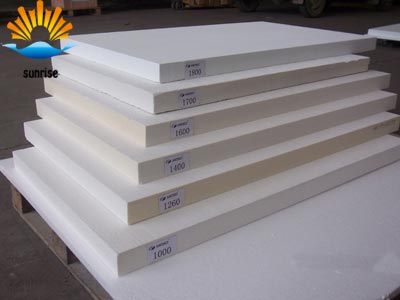SEARCH
when you need our product,simply enter the name of the product you are looking for to continue.
Refractory Knowledge
- Lightweight firebrick ten functions
- Manufacture of Magnesium and Aluminum Brick
- Clay refractory ramming material
- Introduction of Refractory Materials for Foreign Glass Kiln
- High Quality Ceramic Fiber Blankets For Sale are Popular All
- Refractory Materials Used In the Bogie Hearth Furnace
- Phone:0086-371-63838939
- Email:sales@sunriserefr.com
- Office Address: No.36 Fengchan Road Of Zhengzhou, Henan, China (Mainland)
Contact Us
News & Events
Applications of Ceramic Fiber in shuttle furnaces
Date:2016-07-27 08:52 | From:Zhengzhou Sunrise Refractory | Author:admin
Due to low heat storage and good insulation performance, ceramic fiber can greatly reduce the energy loss when used as the lining materials.

The applications of shuttle furnaces include:
(1) Outer insulation
Outer insulation refers to the application of ceramic fiber outside the walls for insulation. Its advantage is to reduce the heat loss with cheap low-grade ceramic fiber, save energy and have no pollution to the products. But, it increases the regenerative heat which makes the masonry easier to broken and the energy-saving effect less significant.
(2) Inner insulation or inner and outer insulation
The inner insulation is achieved by attaching a layer (eg, 50mm) of ceramic fiber to the inner side of the masonry. It can reduce the heat loss and the regenerative loss. The test results show that, the total heat loss is reduced by 50% after the ceramic fiber is used. Ceramic fiber used in the inner side is required to have high refractoriness and have small shrinkage. But ceramic fiber that can meet the requirements is expensive. Besides, products may be polluted by the fiber powder particles. Ceramic fiber containing zircon has better performance and polycrystalline mullite fiber has the best performance.
(3) Full ceramic fiber insulation
Full ceramic fiber insulation means to insulate all the walls with ceramic fiber. According to the working temperature and the parts, different construction methods are used. When the working temperature is below 1000℃, ceramic fiber is flat laid. When it is above 1000℃, ceramic fiber is installed with the module method or lamination method. For common ceramic fiber, lightweight materials have much lower thermal conductivity and better energy-saving effect than heavy materials. Ceramic fiber products with different bulk density are used according to the working temperature. Tests show that, when the heat loss is the same, different working temperature corresponds to an optimal bulk density. If the bulk density is too low, the heat loss will increase. If the bulk density is too high, the regenerative loss will increase. Both are harmful to saving energy. The optimal bulk density increases with the increase of the temperature. At 1350℃, it is 0.35g/cm3. In practical use, it is 0.2g/cm3 if ceramic fiber is used to build the walls. In this case, ceramic fiber is cut into long strips (eg, 150mm). Then strips are folded and compressed by 40% and finally fixed with fire-resistant steel. in practical use, the wall structure is constituted of (from the inside to the outside): polycrystalline mullite fiber 50mm + ceramic fiber blanket 150mm + mineral cotton 50mm. It has achieve ideal results in energy saving and durability.
Ceramic fiber, as insulation materials in the ceramic shuttle kiln, has achieved remarkable results. Compared to the traditional refractory bricks, ceramic fiber can reduce the thickness of the wall by 50% and the weight by 4/5-9/10. It is easy to install and can save materials and energy. It can speed up the heating and cooling rate and improve the firing quality. So, it has achieved good economic and social benefits.
If you have any needs our help or are interested in our products, you can click online advisorychat with us online, or call our customer service telephone: 0086-0371-63838939. We will sincerely serve for you!
